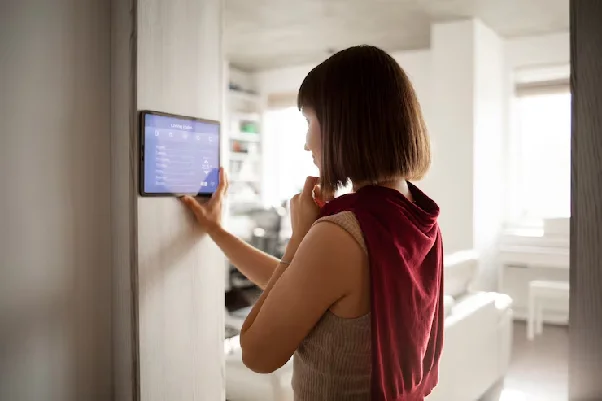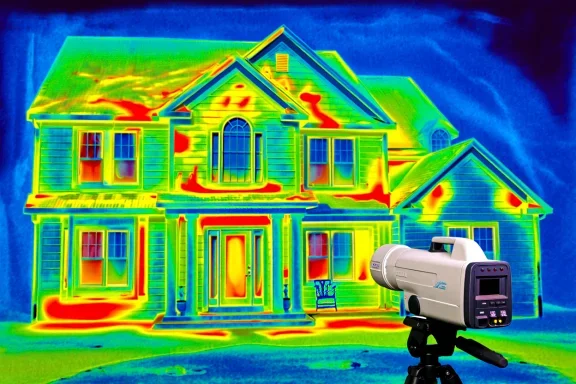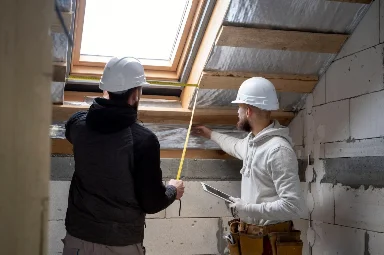Professional Thermography Services for Accurate Diagnostics

Thermography has become a game-changing tool for boosting your home’s energy performance. Using infrared imaging, it translates invisible heat patterns into clear visuals, paving the way for lasting savings. A quick thermographic inspection with a thermal camera lets you pinpoint problem areas and act decisively to improve efficiency.
Cut your bills with thermography: 5 quick wins
Below are five practical fixes that a thermographic survey makes possible. Each one helps you verify the state of your home and eliminate issues that drain energy efficiency:
-
Sealing air leaks – Thermography reveals drafts around windows and doors so you can caulk with precision.
-
Upgrading attic insulation – Thermal imaging highlights heat loss in the roof, guiding your insulation work.
-
Treating thermal bridges – Identify weak spots in the building envelope for more effective insulation.
-
Optimizing your heating system – Detect faults in your setup to restore peak performance.
-
Checking duct tightness – Spot leaks in your ventilation network to stop energy loss.
Acting on these insights can significantly reduce your energy use—and your monthly bills!
Understand infrared thermography in 3 minutes
Infrared thermography is a non-invasive imaging technique that translates temperature variations into visual maps. Using a thermal camera, it captures the infrared radiation emitted by objects and generates a detailed heat map of your home. This makes hidden issues easy to spot, from moisture to mould—topics we also cover in our mould testing services.
Far-infrared principle
Far-infrared belongs to the heat-related section of the electromagnetic spectrum. Thermal cameras pick up these invisible waves and convert them into colour images. By showing surface temperature differences, the technology exposes energy leaks in your house and can be paired with indoor air quality analysis for a full diagnostic.
Passive vs. active imaging
Thermal imaging comes in two distinct approaches:
-
Passive imaging: Captures naturally emitted radiation from objects without an external heat source. This is the go-to method for inspecting homes.
-
Active imaging: Uses an artificial heat source to stimulate objects and is better suited to industrial settings or in-depth studies.
Both methods have their merits, but passive imaging is usually preferred for residential diagnostics due to its simplicity and non-intrusive nature.
Detecting heat leaks and thermal bridges: a closer look using real examples

A quick thermography scan with a thermal imager produces a high-resolution thermogram that pinpoints insulation flaws without tearing into the walls—a true case of non-contact thermography. The table below sums up the typical problems revealed and the ideal solutions:
| Problem detected | Thermal symptoms | Consequences | Possible solutions |
|---|---|---|---|
| Air leaks | Cold lines around windows and doors | Drafts, heat loss | Seal joints, apply caulking |
| Thermal bridges | Hot spots on exterior walls | Major heat loss, energy inefficiency | Exterior insulation, fix wall junctions |
| Insulation defects | Hot areas on ceilings or walls | Overheating, inefficient heating | Reinforce or replace insulation |
| Duct leaks | Hot traces along piping paths | Energy waste, risk of water damage | Repair or replace duct sections |
| Electrical issues | Abnormally hot points | Fire hazard, system overload | Circuit inspection and code compliance |
The example of poor roof insulation
One of the most common thermographic findings is a poorly insulated roof. In the thermal image, the bright red zones indicate significant heat loss, often due to missing or insufficient insulation. In the winter, this leads to excess heating use and spiked utility bills. Solutions typically include better insulating the attic and sealing up any areas where the materials don’t meet properly.
Regulations and certifications to know (RE2020, Q19)
Thermography is governed by standards for thermography such as the RE2020 code, which sets strict benchmarks for insulation and energy efficiency in new buildings. Under these rules, a certified technician uses an infrared camera to capture surface temperatures with pinpoint temperature measurement, ensuring results you can trust.
Certification Q19 relating to thermographic inspections confirms that the equipment and protocols meet the highest levels of quality. This seal of approval guarantees reliable data for mandatory energy audits or renovation projects.
Thermography plus insulation: the most cost-effective combo

Pairing thermal diagnostics with targeted insulation work offers a measurable, high-return investment. Thermography helps accurately identify the areas that truly need intervention, preventing unnecessary renovations.
This strategic approach improves energy efficiency upgrades and cuts heating and cooling costs. For instance, external wall insulation guided by thermal imaging often leads to a 20–30% reduction in heat loss. This translates to a notable drop in both energy usage and utility bills.
Limitations and best practices for reliable thermal imaging
To ensure accurate thermographic analysis, certain conditions must be met:
- Temperature difference – There must be at least a 10°C difference between indoor and outdoor temperatures for clear results.
- Weather conditions – Avoid wind or rain, as they can distort readings.
- Viewing angle – Keep the camera perpendicular to the surfaces for even coverage.
- Surface conditions – Be mindful of reflective materials, which can alter the thermal image.
Common errors in thermal image interpretation include:
- Mistaking air leaks for thermal bridges
- Misidentifying electrical faults
- Misreading reflections as hot spots
Thermography stands out as a must-have tool to boost your home’s energy efficiency and overall comfort. By providing clear and reliable diagnostics, it enables cost-effective upgrades with measurable results. When combined with insulation work, thermography not only reduces your energy consumption but also delivers lasting peace of mind—for both your home and your wallet.